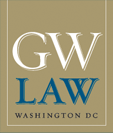Document Type
Article
Publication Date
2009
Status
Accepted
Abstract
Cartels often act like single dominant firms. Because there are a number of difficulties in determining market effects of single dominant firms, this article proposes that enforcement policy recognize the connection between cartels and firms engaged in monopolization. The resulting insight would be useful to determine whether or not cartel conduct should be viewed with suspicion when engaged in or by a dominant firm in a similar industry. Many cartels do not focus solely on suppressing interfirm rivalry; rather, many operate as two-stage mechanisms: the first stage consists of reaching a consensus on a plan to restrict output and curb rivalry; the second stage consists of using exclusionary behavior often featured in monopolization cases to ensure the effectiveness of its efforts to restrict output. Accordingly, antitrust authorities should look beyond the suppression of interfirm rivalry and investigate monopolization conduct. The focus on cartel applications of monopolization behavior has advantages for empirical investigation that illuminate the competitive significance of conduct by which individual firms are claimed to have monopolized markets.
Currently, enforcement agencies often treat anticompetitive behavior of cartels differently than dominant firms because of the tendency to categorize anticompetitive behavior as either a horizontal agreement between competitors to suppress interfirm rivalry or monopolization by a single dominant firm. It may be appropriate to view some cartel behavior as a combination of the two because some cartels exhibit single dominant firm type behavior. This article extends Michael Porter’s “Five Forces” to obtain a structure for understanding both the suppression of interfirm rivalry and monopolization conduct by a cartel and to show that monopolization behaviors are common in practicing cartels.
Recognizing the analytical and behavioral links between the historically separate areas of cartel and dominant-firm behavior suggests a number of future directions for public enforcement policy and research by competition authorities. This article posits a number of suggestions and open questions for competition agencies in order to help guide antitrust authorities as to where they should direct monopolization resources. It concludes that antitrust authorities should not segregate anticompetitive behaviors into the two categories and should aggressively investigate the presence or absence of monopolization in cartels in order to prosecute and deter anticompetitive behavior.
GW Paper Series
GWU Legal Studies Research Paper No. 592; GWU Law School Public Law Research Paper No. 592
SSRN Link
http://ssrn.com/abstract=1957300
Recommended Citation
William E. Kovacic et. al., Cartels as Two-Stage Mechanisms: Implications for the Analysis of Dominant-Firm Conduct, 10 Chi. J. Int'l L. 213 (2009).
